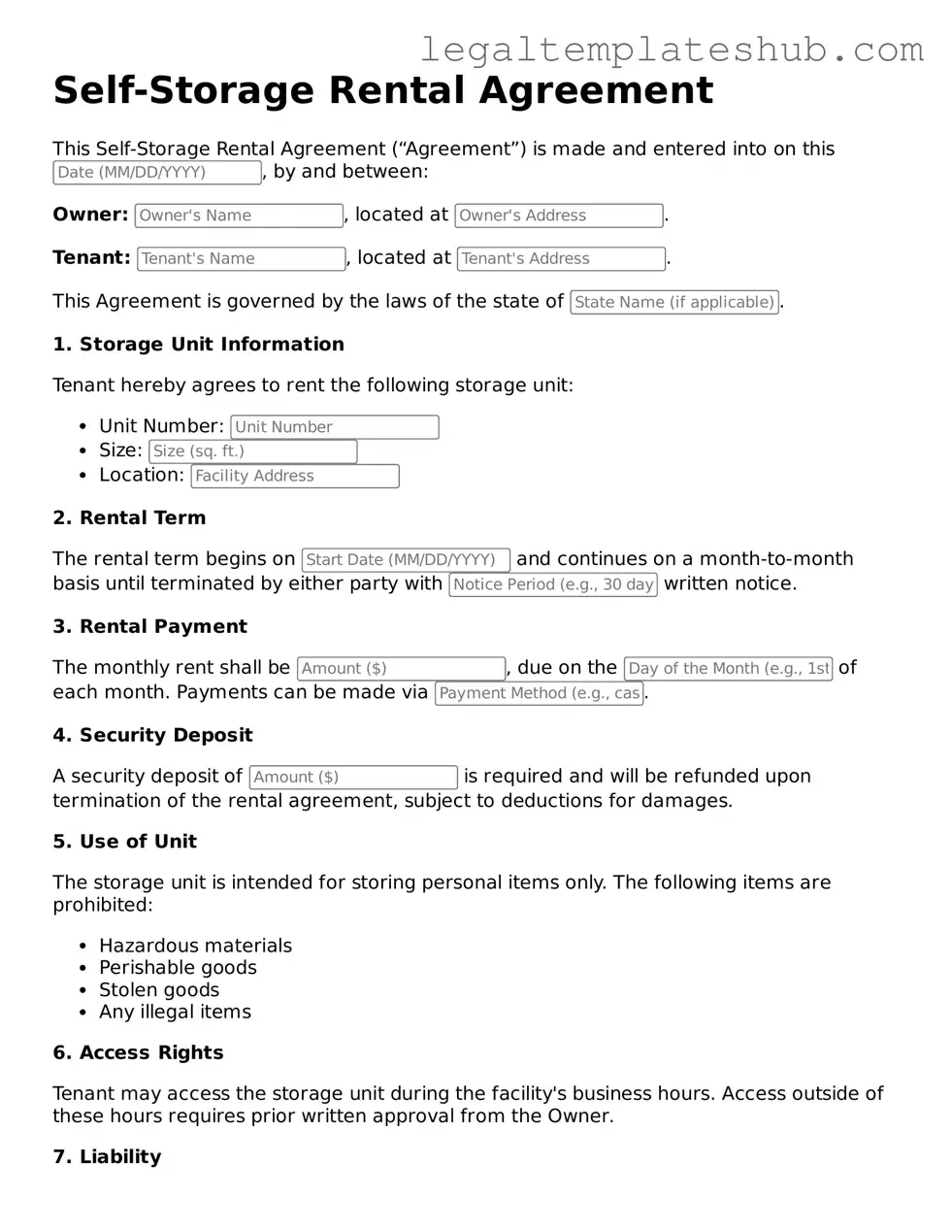Printable Self-Storage Rental Agreement Template
The Self-Storage Rental Agreement form is a legal document that outlines the terms and conditions under which a customer rents storage space from a facility. This agreement protects both the renter and the storage provider by detailing responsibilities, payment terms, and other essential information. To ensure a smooth rental experience, it is crucial to fill out the form accurately and thoroughly.
Ready to get started? Click the button below to fill out the Self-Storage Rental Agreement form.
Access Editor
